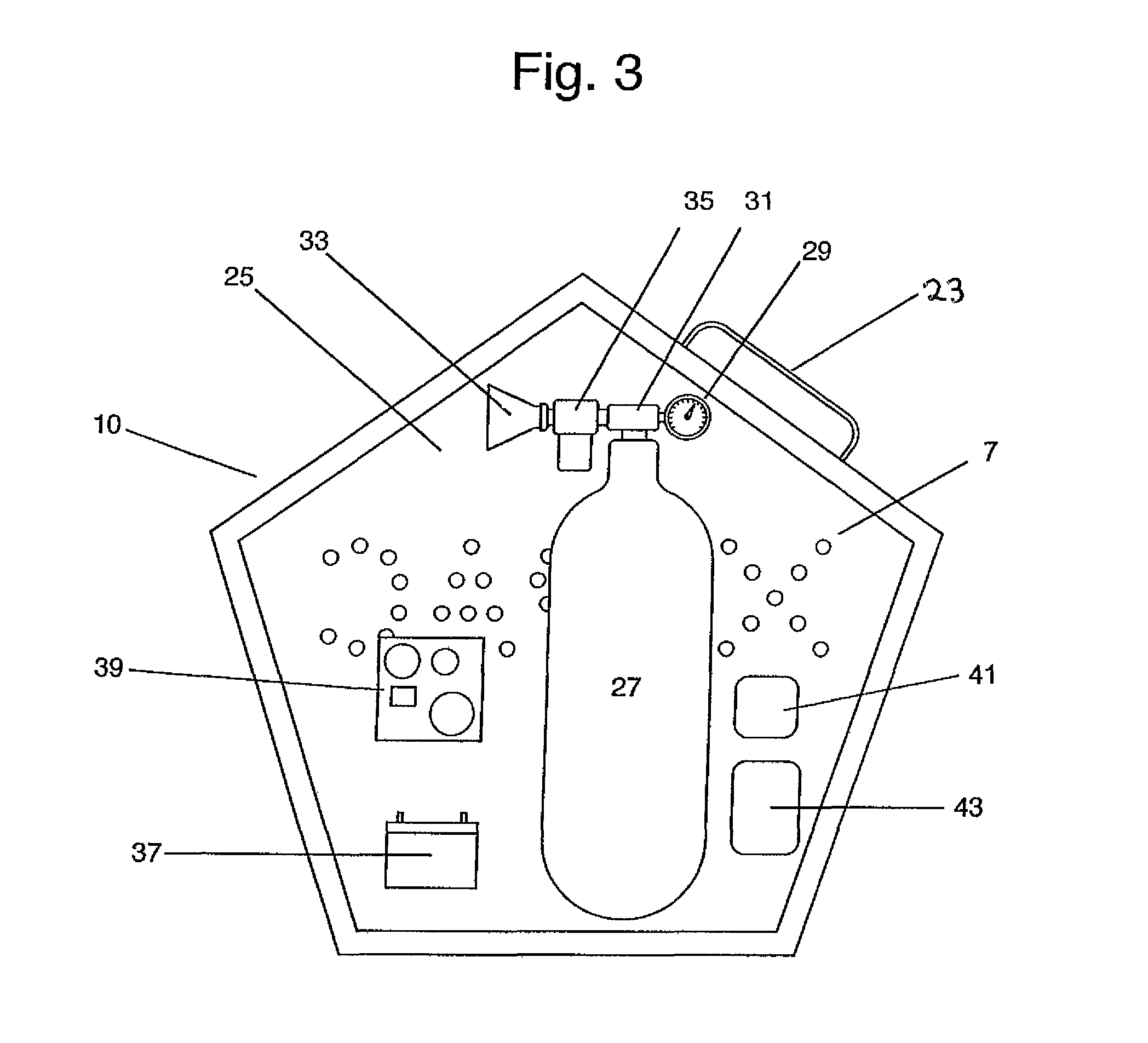Fire suppression system for aircraft storage containers
a technology for aircraft storage containers and fire suppression systems, which is applied in fire rescue and other directions, can solve the problems of defective batteries, fires that are rarely started in cargo hold, and fires or conditions leading to fires that are easily fatal to aircraft's continuing ability to safely fly, etc., and achieves easy identification, easy programming of hmi, and easy identification
- Summary
- Abstract
- Description
- Claims
- Application Information
AI Technical Summary
Benefits of technology
Problems solved by technology
Method used
Image
Examples
Embodiment Construction
[0044]Reference is first made to FIGS. 1-3 in which a fire suppression unit is generally designated by the reference numeral 10 and includes a housing 11 designed, in one example, to be pentagonal in shape. The housing is pentagonal in shape because typical baggage is rectangular cubic or spherical and the pentagonal shape of the fire suppression unit 10 enables baggage handlers to easily distinguish it from other baggage that will be loaded into cargo containers. The non-rectangular shape also prevents holes in its casing from being blocked by other cargo. Those holes facilitate the device sensing ambient conditions in a cargo container and provide exit points for fire suppressing chemicals.
[0045]The fire suppression unit shown in FIGS. 1-3 includes a front face 13 on which is located an identifier 15 such as a barcode label (FIG. 1). The barcode label is used by baggage handlers to allow identification of the unit 10 and correlation of the particular unit 10 bearing the barcode 15...
PUM
 Login to View More
Login to View More Abstract
Description
Claims
Application Information
 Login to View More
Login to View More - R&D
- Intellectual Property
- Life Sciences
- Materials
- Tech Scout
- Unparalleled Data Quality
- Higher Quality Content
- 60% Fewer Hallucinations
Browse by: Latest US Patents, China's latest patents, Technical Efficacy Thesaurus, Application Domain, Technology Topic, Popular Technical Reports.
© 2025 PatSnap. All rights reserved.Legal|Privacy policy|Modern Slavery Act Transparency Statement|Sitemap|About US| Contact US: help@patsnap.com



